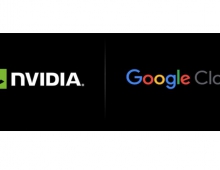
Google Makes Search More Human
Google has changed its search engine in an attempt to offer instant answers to search questions. A new function, the Knowledge Graph, will make the site's algorithms act "more human", according to Google.
The Knowledge Graph enables users to search for things, people or places that Google knows about - landmarks, celebrities, cities, sports teams, buildings, geographical features, movies, celestial objects, works of art and more - and instantly get information that's relevant to their query. This means that search will no longer rely only on searching of words (queries). Google says tha this is a critical first step towards building the next generation of search, which taps into the collective intelligence of the web and understands the world a bit more like people do.
Google's Knowledge Graph isn't just rooted in public sources such as Freebase, Wikipedia and the CIA World Factbook. It?s also augmented at a much larger scale. It currently contains more than 500 million objects, as well as more than 3.5 billion facts about and relationships between these different objects. And it's tuned based on what people search for, and what Google finds out on the web.
For example, if a user searches for "taj mahal", the updated Google will understand the difference - whether the user is searching for the Taj Mahal the monument, or Taj Mahal the musician.
With the Knowledge Graph, Google can also better understand a query, and will also summarize relevant content around that topic, including key facts users are likely to need for that particular thing. For example, if you are looking for Marie Curie, you will see when she was born and died, but also get details on her education and scientific discoveries.
How does Google know which facts are most likely to be needed for each item? For that, Google goes back to its users and study in aggregate what they've been asking Google about each item.
The Knowledge Graph also helps Google understand the relationships between things. Marie Curie is a person in the Knowledge Graph, and she had two children, one of whom also won a Nobel Prize, as well as a husband, Pierre Curie, who claimed a third Nobel Prize for the family. All of these are linked in the graph. It's not just a catalog of objects; it also models all these inter-relationships.
Finally, the Knowledge Graph can help users make some unexpected discoveries. Users might learn a new fact or new connection that prompts a whole new line of inquiry.
Google has begun to gradually roll out this view of the Knowledge Graph to U.S. English users. It's also going to be available on smartphones and tablets.
The offering is the latest example of search companies moving away from offering a list of text-based links as search results. Last week, Microsoft's Bing unveiled a redesign that includes a "snapshot" column.
Google's Knowledge Graph isn't just rooted in public sources such as Freebase, Wikipedia and the CIA World Factbook. It?s also augmented at a much larger scale. It currently contains more than 500 million objects, as well as more than 3.5 billion facts about and relationships between these different objects. And it's tuned based on what people search for, and what Google finds out on the web.
For example, if a user searches for "taj mahal", the updated Google will understand the difference - whether the user is searching for the Taj Mahal the monument, or Taj Mahal the musician.
With the Knowledge Graph, Google can also better understand a query, and will also summarize relevant content around that topic, including key facts users are likely to need for that particular thing. For example, if you are looking for Marie Curie, you will see when she was born and died, but also get details on her education and scientific discoveries.
How does Google know which facts are most likely to be needed for each item? For that, Google goes back to its users and study in aggregate what they've been asking Google about each item.
The Knowledge Graph also helps Google understand the relationships between things. Marie Curie is a person in the Knowledge Graph, and she had two children, one of whom also won a Nobel Prize, as well as a husband, Pierre Curie, who claimed a third Nobel Prize for the family. All of these are linked in the graph. It's not just a catalog of objects; it also models all these inter-relationships.
Finally, the Knowledge Graph can help users make some unexpected discoveries. Users might learn a new fact or new connection that prompts a whole new line of inquiry.
Google has begun to gradually roll out this view of the Knowledge Graph to U.S. English users. It's also going to be available on smartphones and tablets.
The offering is the latest example of search companies moving away from offering a list of text-based links as search results. Last week, Microsoft's Bing unveiled a redesign that includes a "snapshot" column.




















